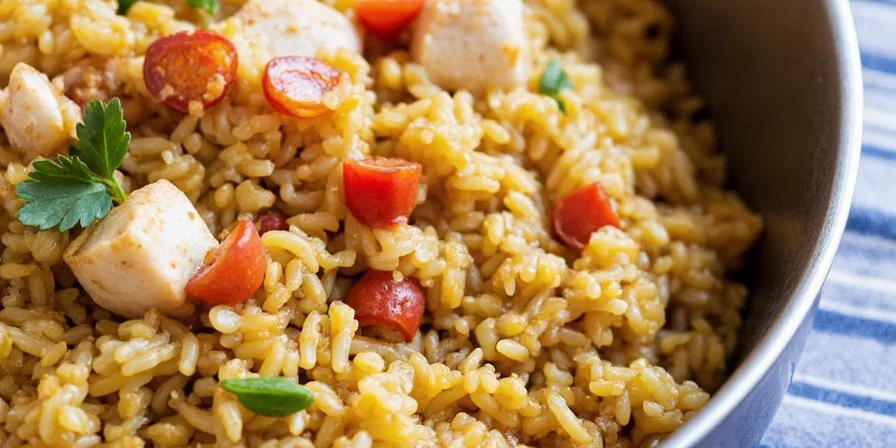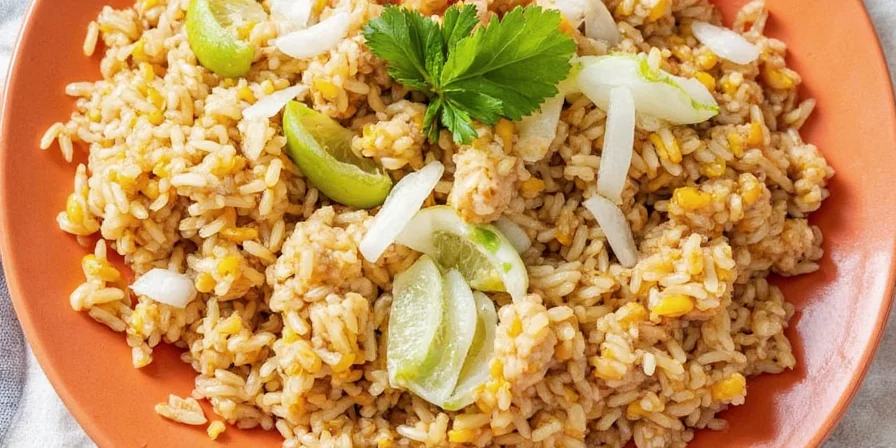Arroz con Pollo: A Global Spice Tradition with a Twist
If you’ve ever walked into a Latin American home on a Sunday afternoon and been greeted by the irresistible aroma of saffron, garlic, peppers, and simmering chicken—congratulations! You might just be about to experience arroz con pollo, one of the most beloved comfort foods across the globe.
In this article, we’ll dive deep into what exactly arroz con pollo is, explore its global spice variations, offer practical cooking tips, and even compare different regional styles in handy tables. Plus, we’ll serve up some spicy hot takes along the way!
Table of Contents
- What Is Arroz con Pollo?
- A Global Dish with Local Twists
- The Spice Secrets Behind the Flavor
- Pro Tips for Perfect Arroz con Pollo Every Time
- Visual Spice Comparison Chart
- Common Myths Busted
- Final Thoughts
What Exactly Is Arroz con Pollo?
The name says it all: "arroz" means rice and "pollo" means chicken in Spanish. But don’t be fooled by its simplicity—arroz con pollo (rice with chicken) is a one-pot marvel that combines protein, grains, and spices into a deeply satisfying meal.
Traditionally, it starts with browning chicken pieces, then building layers of flavor using aromatic spices like saffron, paprika, cumin, and herbs. Vegetables like onions, peppers, and garlic are often included, followed by rice and broth, which are cooked together until everything melds into a fragrant harmony.

Historical Roots
Though its exact origin is debated, arroz con pollo has roots in both Spain and Latin America. Some historians trace it back to Moorish Spain, while others credit early Spanish colonizers who brought their rice dishes to the New World, where they adapted to local ingredients and climates.
A Global Dish with Local Twists
One of the best things about arroz con pollo is how each region makes it their own—with spices playing a starring role. Let’s take a whirlwind tour of how different cultures season and shape this iconic dish:
| Region | Spices & Ingredients | Signature Flavors | Unique Techniques |
|---|---|---|---|
| Caribbean (Puerto Rico) | Sofrito, adobo, annatto oil | Earthy, savory, slightly sweet | Seared chicken first, then sautéed rice |
| Spain | Saffron, smoked paprika, garlic | Smoky, floral, rustic | Paelleira pan used for paella-style cooking |
| Mexico | Tomato sauce, cumin, dried chili powder | Rich, tangy, mildly spicy | Rice cooked separately, then combined |
| Peru | Aji amarillo pepper, cilantro | Peppery, citrusy, vibrant | Uses yellow chili paste base |
| Colombia | Garlic, oregano, annatto | Herbaceous, warm, slightly bitter | Often includes peas or carrots |

The Spice Secrets Behind the Flavor
When it comes to making memorable arroz con pollo, the magic lies not just in the chicken or the rice—but in the spice blend. Here’s a breakdown of the key players:
- Saffron: The golden thread. Used sparingly but adds a floral, earthy note that defines many Iberian and Mediterranean versions.
- Annatto (Achiote): Responsible for the orange hue in many Caribbean dishes. Earthy and nutty with a slight peppery kick.
- Adobo Seasoning: A staple in Puerto Rican kitchens. Combines salt, garlic, oregano, and sometimes citrus zest.
- Smoked Paprika (Pimentón): Adds smokiness and depth, especially popular in Spanish and Mexican renditions.
- Cumin: Brings warmth and a hint of bitterness, balancing out sweeter elements like tomatoes or peppers.
- Aji Amarillo (Peru): The queen of South American chilies. It's fruity, moderately spicy, and gives arroz con pollo a vivid color and unique heat.

Pro Tip:
To really elevate your spice game, toast whole spices before grinding them. This enhances their flavor profile dramatically. If you're short on time, opt for high-quality pre-ground spices—avoid the dusty ones sitting on supermarket shelves since their potency fades quickly.
Pro Tips for Perfect Arroz con Pollo Every Time
Want your arroz con pollo to taste like it came straight from your abuela’s kitchen? Here’s a list of actionable, foolproof tricks to nail it every time:
- Brown the chicken well: Sear the pieces until golden. This creates fond at the bottom of the pot, which becomes flavor gold when deglazed.
- Ditch the rinse: Don’t wash your rice before cooking—it removes the starch that helps the grains stick together and absorb flavors.
- Sauté the rice first: Toasting the grains briefly in fat (like olive oil or annatto oil) gives them a richer, nuttier flavor and prevents mushiness.
- Use homemade stock: Whether it’s chicken broth or vegetable-based, it makes a massive difference over water or store-bought cubes.
- Don’t stir too much: Just like risotto, over-stirring can release too much starch and make your rice gluey. Stir occasionally to avoid burning.
- Add acidity at the end: A squeeze of lime or lemon brightens up the entire dish and balances out the richness of the spices.
- Let it rest: Once off the heat, let the rice sit covered for 5–10 minutes. This allows moisture to redistribute and ensures fluffier results.

Visual Spice Comparison Chart
Want to know which spice goes where and why? Check out our simple comparison table below:
| Spice | Flavor Profile | Best For | Substitution Option |
|---|---|---|---|
| Saffron | Floral, earthy | Spanish & Moroccan styles | Turmeric + pinch of paprika |
| Annatto | Nutty, peppery | Caribbean & Central American | Paprika + turmeric |
| Adobo | Savory, garlicky | Puerto Rican & Dominican | Garlic powder + oregano + salt |
| Smoked Paprika | Smoky, bold | Spanish, Tex-Mex | Regular paprika + chipotle powder |
| Cumin | Earthy, warm | Mexican & Middle Eastern | Coriander powder |
| Aji Amarillo | Fruity, spicy | Peruvian & Ecuadorian | Hatch green chiles + yellow bell pepper |

Myths About Arroz con Pollo — Busted!
Let’s clear up a few common misconceptions about this classic dish:
- Myth 1: Arroz con pollo must use skin-on chicken
Reality: While dark meat with skin offers more flavor, boneless, skinless thighs or breasts work perfectly, especially for weeknight meals. - Myth 2: Only long-grain rice works
Reality: Short-grain rice can be used if you prefer a creamier texture. Just adjust the liquid accordingly. - Myth 3: You need a special pan
Reality: Any large, heavy-bottomed pot will do. Special pans like paella pans are nice, but not necessary. - Myth 4: It should look dry and separate
Reality: Regional preferences vary. Some styles aim for moist, soft rice, while others go for a socarrat-like crust. - Myth 5: It’s hard to make ahead
Reality: In fact, arroz con pollo often tastes better the next day as the flavors have time to marry. Reheat gently with a splash of broth or water.

Conclusion: More Than Just Chicken and Rice
At its heart, arroz con pollo is more than a humble rice-and-chicken dish. It’s a celebration of heritage, culture, and community—all tied together with a bouquet of spices.
Whether you’re making a Spanish-style version with saffron and paprika or spicing things up with Peruvian aji amarillo, there’s no wrong way to enjoy this globally loved staple. With a few smart spice choices and cooking techniques, you can turn a simple meal into something unforgettable.
So fire up your pot, grab your favorite spices, and get ready to cook a little piece of culinary history—one fragrant spoonful at a time.












 浙公网安备
33010002000092号
浙公网安备
33010002000092号 浙B2-20120091-4
浙B2-20120091-4